+ This lesson is taken from Soundfly’s The Art of Hip-Hop Production. To access the rest of this course, plus hundreds more videos and tutorials on beat making, mixing, songwriting, theory, and more, subscribe here.
There are two main ways to compose a bass line in today’s hip-hop climate. You can choose a more traditional route by writing and recording a bass guitar or synth bass part, or you can go for a super-low, super-sub bass by using trap-style 808-kick bass lines or other sine wave sounds.
Let’s look at some examples and how to approach writing with both kinds of bass sounds. And if this article whets your appetite for hip-hop beat production tips, head over to our online course The Art of Hip-Hop Production now and grab a free preview!
Creating Bass Lines
The first option for writing hip-hop bass lines is to utilize the low to low-mid range. The most obvious choice for working in this frequency range is to turn to the electric bass guitar. These lines are loud and powerful but have a surprising amount of nuance and flexibility. An excellent electric bassist can bring a track to life, so it’s always worth considering recording a live bassist. They can create a lot of humanity in simple, unobtrusive parts, and add depth to otherwise dry, electronic-sounding beats.
From a musical standpoint, these kinds of bass lines can be a bit busier and more melodic since they exist in a range that’s “singable” (at least by the baritone section of the choir). We can learn a lot about what makes a great line by dissecting classic bass performances from blues, rock, funk, and disco. A classic example of bass guitar in early hip-hop is The Sugarhill Gang’s “Rapper’s Delight,” which samples the bass line and beat from Chic’s “Good Times.”
Let’s break this line down and see what makes it work.
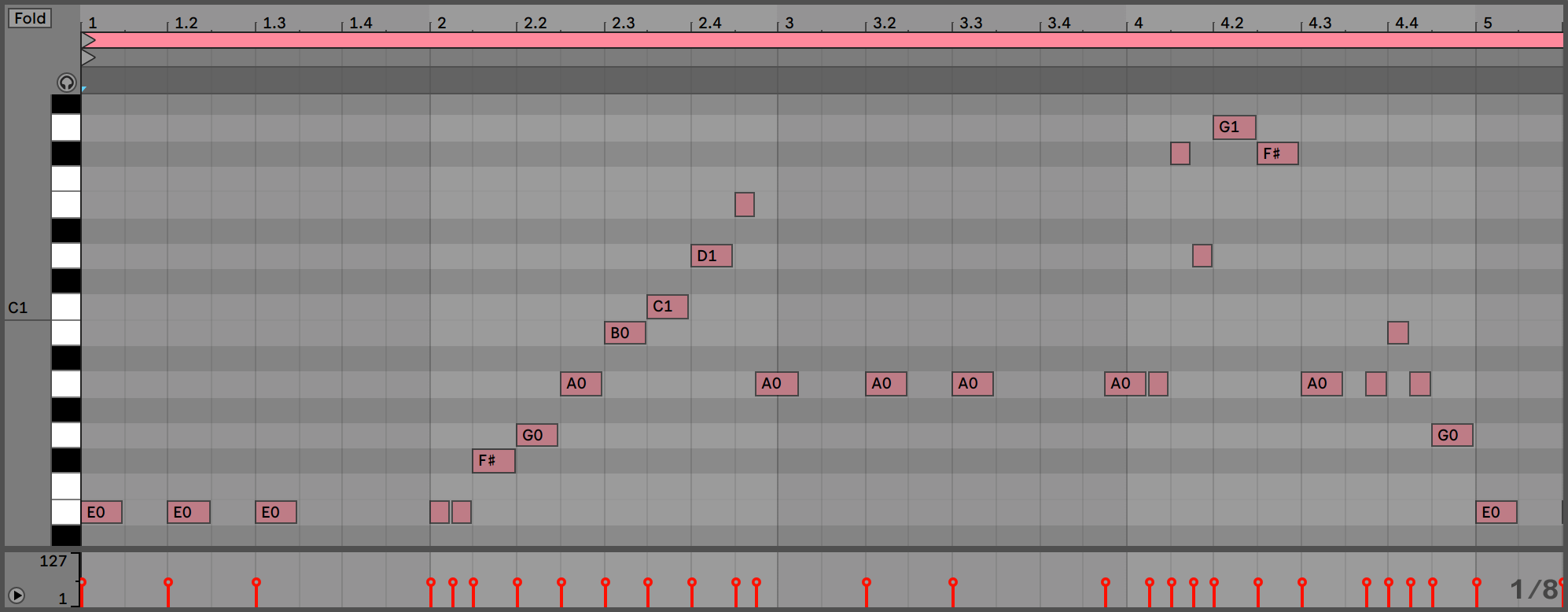
Download: Rapper’s Delight Bass MIDI
First, the bass always hits on the first beat of the first bar of the cycle.
Every time the cycle repeats, that low E root is right there to support that downbeat. Notice that it doesn’t have to hit every downbeat of the pattern, but it must hit on that repeated downbeat at the start of the cycle. Funky bass lines emphasize beat one and lay a solid rhythmic foundation.
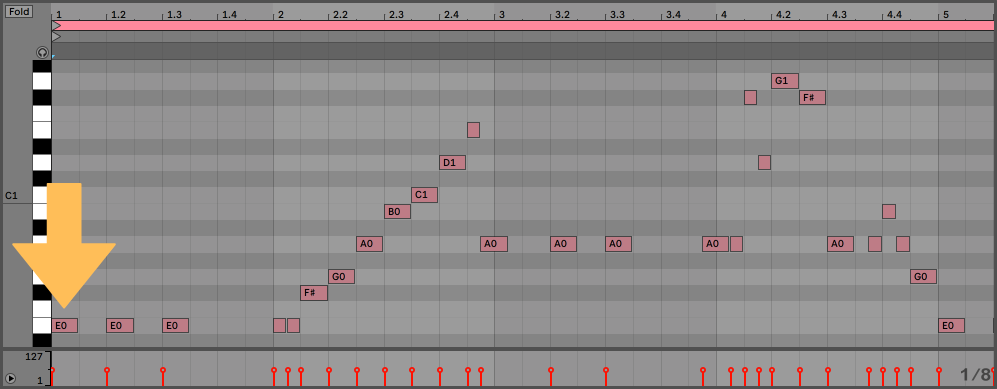
Second, notice how the bass provides a harmonic foundation.
By repeating the root note of the chord a few times, the bass part defines the underlying harmony (E minor to A major, two bars each), before continuing into a funky outline of the scale.
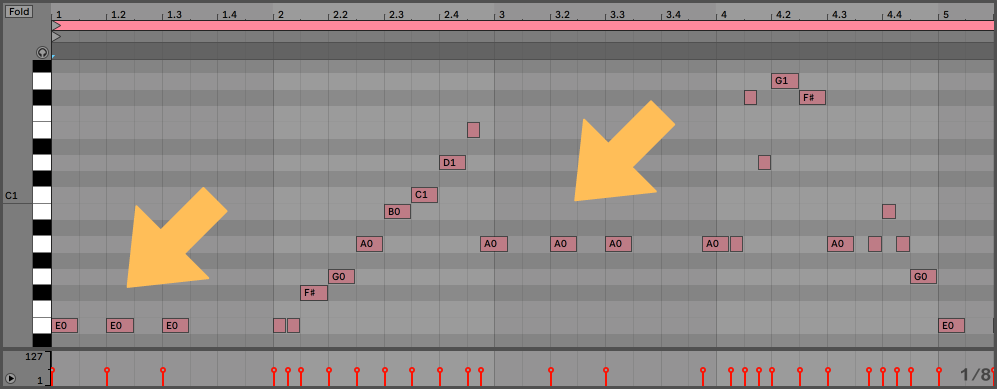
Third, the part is intensely funky, but not too complicated.
It’s the melodic hook of the song and the real star of this show. At the same time, it follows standard rules for writing a good melody — it has a balance of stepwise motion and leaps, and stays within a comfortable singing range (in this case, less than two octaves). Great bass lines should be singable!
Here are some other examples of effective melodic mid-range bass lines in hip-hop.
The evolution of bass continues to this day. Now, let’s check out that classic prosumer drum machine from Japan — the Roland TR-808 — and, specifically, the iconic subby sound of its beloved kick drum.
Creating and Programming 808s
It’s a kick! It’s a bass! It’s…
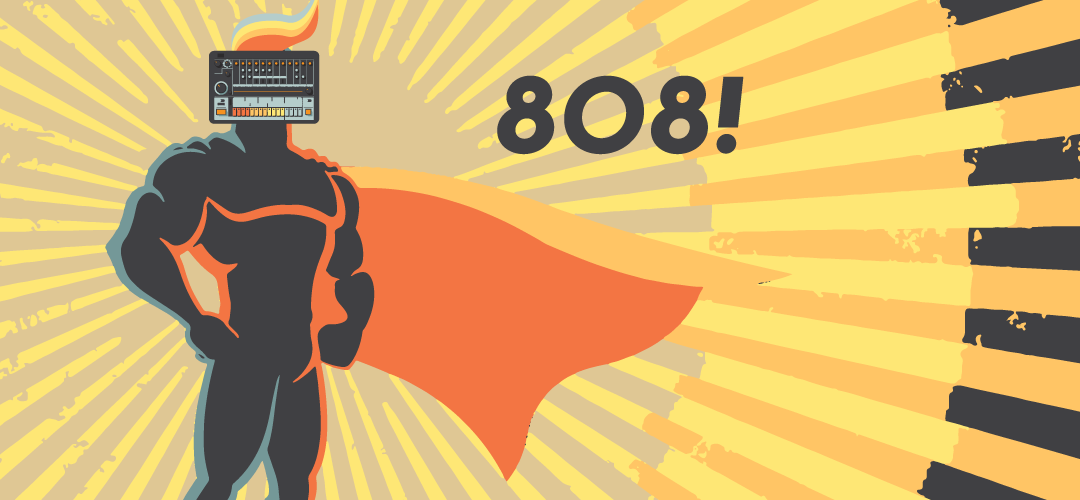
Whatever it is, modern hip-hop is dominated by 808s. We use the term loosely, but 808s reference the historic long bass drum sound first made popular by Roland’s TR-808 drum machine. In today’s production world, it’s hard to find a big hip-hop hit without an 808 or sub bass. These trunk-rattling frequencies are a crucial part of the genre.
Initially, musicians used 808s on their own as the kick. While you can definitely still do that, things have progressed. Nowadays, the subby 808s are most commonly found as a bass tone that’s been layered with a punchy kick sound. This punchier kick layer typically has less bass content and is there to help create a crisper attack. At its most basic, the kick and 808 play essentially the same pattern, but the 808 bass provides the sub and tonal content.
Let’s check out “First Off” by Future and Travis Scott to get an example of this sound.
These bass lines are often much simpler, yet follow the same basic rules as electric bass lines. You have a couple options for how to go about programming these, but let’s start with the sound.
Using a Sampler
If you’re a Splice user, you can choose an 808 sample from their library, or just generate your own and drag it into a sampler (not a drum rack!) of your choosing. Most samplers will automatically start resampling the sound so that its pitch is adjusted as you play it in.
Here’s what that sounds and looks like:
Part of getting this right is also about choosing the appropriate sample. Some are super long. If you have an active kick pattern, choose a shorter 808. If your kick is less active, you can probably get away with a longer sample, but those aren’t good for complex bass lines.
Using a Synth
The other option is to use a synth. Since the original 808 sound is synth-derived, we can do something similar. We want to have a pretty simple sound — think sine or triangle wave — and a drum-like envelope. If you’re not super familiar with synths, check out our free course series, Demystifying Synths.
Here, we’ll set this up using Helm, a freeware synth. The great thing is, there’s actually very little to do:
If the programming isn’t your thing, here’s a downloadable patch you can load into Helm and try out!
Download: 808 Basic Helm Patch
Writing 808 Bass Lines
Once you’ve got your sound dialed in, you’re ready to start getting creative. Keep in mind, these bass lines are simple — they’re not going to have the same fluidity and movement as the electric bass lines we looked at on the previous page.
Remember, good bass lines hit on the first beat of the loop.
Start by copying down the kick MIDI, or try playing your bass sound like it’s a kick drum. After all, it should mirror your kick, maybe even exactly. As an example, here’s the bass line from Future’s “First Off.”
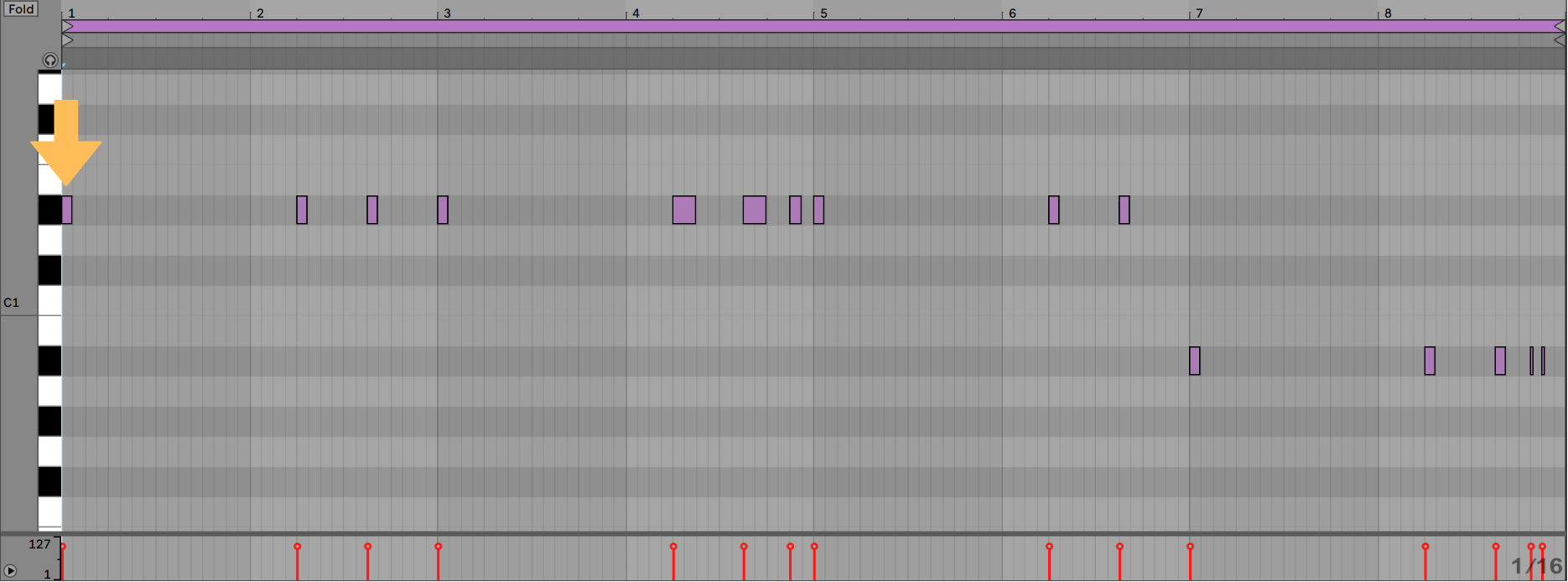
It’s also a good idea to think about the role 808s typically fill in your sub-genre. In trap music, they function as the bass line following the kick. In some other sub-genres, like reggaeton, they might just be used for one hit to create a massive downbeat at the start of the cycle.
Provide a harmonic foundation.
The 808 might be the only real indication of the harmony for the track, so it’s important that it feels solid. If there are chords, stick to roots, and at most try fifths and octaves.
In the Future track, the bass is almost entirely E♭(the root), with only a quick move to B♭(the fifth) for the last two bars of each repeat.

Finally, keep it simple.
This is not the place for a ton of different pitches — none of that funk chromaticism. In some tracks, the 808 might only play two notes, and they’re both likely roots. Stick to a range of about an octave maximum.
Here is the drum and bass MIDI for the Future track, if you’d like to pull it into your DAW and explore it further!
Download: Future MIDI
The type of sample or synth you use will also determine how you shape the line. When you compose, focus more on getting the right feeling than on being harmonically “correct.” Instead of aiming for complex note choices, experiment with your sound choices and maybe try some distortion so things sound grittier.
Write and transpose.
A common misconception is that 808s have to be low and boomy, even when you’re writing. You can often make things easier on yourself by writing them in an easier-to-hear octave, then shifting them down once you’re happy with your note choices.
Don’t stop here!
Continue learning with hundreds of lessons on songwriting, mixing, DIY home recording and production, composing, beat making, and so much more in Soundfly’s courses with artists like Jlin, RJD2, Ryan Lott, Kiefer, and Charles Burchell’s The Art of Hip-Hop Production.




